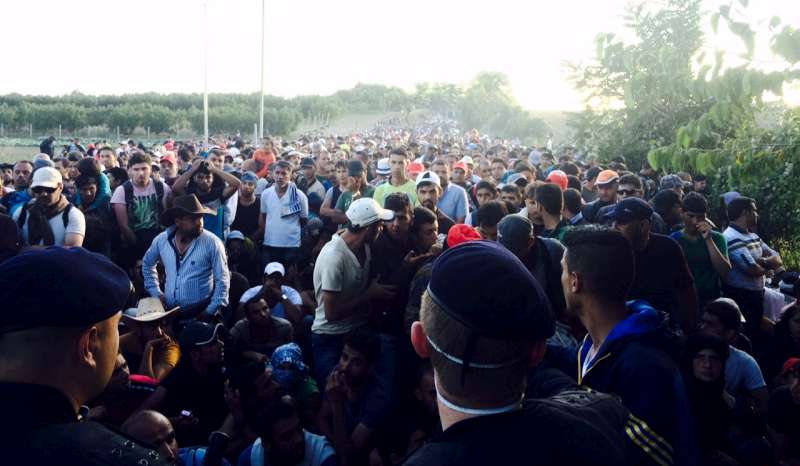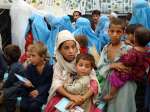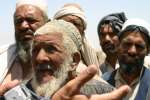Over 1,000 people wait for buses at Bapska border crossing between Croatia and Serbia
News Stories, 23 September 2015
BAPSKA, Croatia-Serbia border, Sept 23 (UNHCR) – More than a thousand refugees and migrants waited under the searing sun all Wednesday at the newly blocked Serbia-Croatia border crossing near Bapska -- hot, distressed and increasingly worried that their trek to safety had been halted in its tracks.
UNHCR staff searched for the young and the infirm, the disabled and the elderly, and negotiated with Croatian police to reunite families split apart in the throng, as volunteers distributed supplies.
But even as fleets of buses moved thousands of people out of the transit centre in Opatovac, only a few kilometres away, almost no buses came to relieve the border's massing crowd.
"They've been waiting for hours; they're tired, they're hungry," said Diana Tifor, a protection officer with UNHCR. "Families with babies, people in wheelchairs; people are collapsing from the heat, collapsing with exhaustion."
Ambulances were on standby to respond to medical emergencies, but families were refusing to be split up as they tried to continue their onward journey. Red Cross medical staff did what they could to cool people down and help people with injuries.
At moments the crowd would surge and try to break through the line. Croatian police would then contain the crowd – "Sit down, Sit down" – as babies cried in alarm. One woman in a black chador had to be rushed to safety, shivering in clear distress.
Concern grew that patience would collectively snap. Mid-afternoon, a large contingent of riot police arrived to offer back-up, and marched forward in lines to secure the frontier. No Serbian police were in sight.
"I don't need water, I need to go," cried Eleya Alarab, brandishing his Syrian passport. "In Macedonia they said go! In Serbia, go! But not in Croatia. Why here?"
Farah Hamsho, in a trendy pair of sunglasses, stood in the shade under a stop sign, trying to sooth her10-month old son. 'Tell me about your journey,' I asked. 'She and husband Omar Deiri looked at each other and laughed. 'Our journey. Hahahaha.'
Omar is an engineer who left Aleppo three years ago for Latakia. But the situation deteriorated there too, as the government militia grew more demanding, and he feared for the safety of his son.
"There are people called the Shabiha; they have guns, and take anything they want. We have no future in Syria in this war," he said. "War, war, war," agreed Farah. "It's no good for babies." "We're still young; we have our futures," added Omar.
Meanwhile, as night fell, UNHCR started distributing blankets at the transit reception centre and at the Bapska border point – in case people have to spend a night there. At the transit centre in Opatova, more people arrived on buses in the early evening while a clean up of garbage strewn everywhere was underway.
By Mark Turner on the Serbian-Croatian border





















































